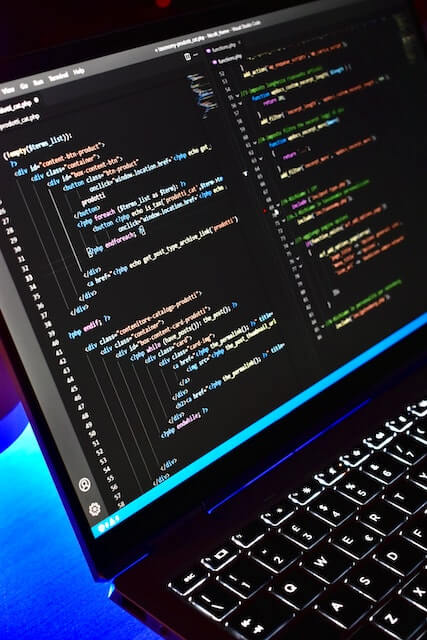
How to Benefit From Distributed Engineering Teams

Distributed engineering teams are seeing an unprecedented rise, as the pandemic has accelerated change, resulting in an increasing number of employees working remotely. As of 2022, 48% of tech employees choose to work fully remote, which is 22% more than during the lockdown. What does it mean in the long run? A distributed team model will become increasingly popular among businesses that focus on digital transformation and agility. But it should come as absolutely no surprise that hiring a distributed engineering team is only half the battle: You’ll have to consider several factors to get the maximum value out of it. Keep reading to learn about the major types of distributed teams and how to manage one in the most efficient way possible.
What is a distributed engineering team?
To put it simply, a distributed engineering team is a way of organizing work that implies tech employees working from different locations. Basically, there are three major types of distributed teams:
- Horizontal
- Vertical
- Matrix
Horizontal distributed engineering. In this distributed team model, team members have defined roles, but their responsibilities are often distributed based on the workload. The horizontal engineering structure will be a perfect match for tech squads that require little to no supervision and have clearly defined roles that don’t overlap. For example, if your project requires two teams of developers (front-end and back-end), a horizontal structure will come in handy since both teams are composed of developers with defined roles and imply no hierarchical relationship.
Vertical distributed engineering. The vertical structure is defined by a greater degree of power hierarchies. The team members occupying higher managerial positions supervise the progress of the project. A vertical model is usually a great choice for product-oriented distributed engineering teams within larger companies, as it helps create a clear-cut hierarchy and ensure adequate management while working towards common goals.
Matrix distributed engineering. The matrix team structure is drastically different from other models. It is used in cases where members of one team report to different managers as well as in situations where companies set up multiple teams responsible for different parts of the project while working jointly on shared goals. This distributed team model comes with the most flexible structure, as it allows to alter the team structure if needed.
How to make the most of a distributed engineering team
Some simple (but often overlooked) factors impact the quality of a distributed team’s work. From hiring the right kind of engineers to establishing adequate communication, an effective leader will recognize the potential pitfalls to ensure timely task completion and staying on the same page with the team. Here are some guidelines to help you benefit from a distributed engineering team.
Ensure high-quality communication
Despite the common belief, smooth and uninterrupted communication is possible among distributed team members – on the caveat of investing the effort. Developing communication guidelines can help employees avoid confusion and feel more comfortable reaching out to other team members. For example, team members may want to use email for detailed messages and Slack or Skype for quick updates. Also, pay extra attention to cultural differences; what works for one culture may be absolutely inappropriate for another. Last but not least, make sure to control the number of meetings, otherwise, the team will not have enough time to complete their tasks.
Build a strong culture
Team culture is among the most crucial factors that can help your team work towards common goals. Unlike teams that are working from the same office, distributed engineering teams may find it hard to connect as a unit. No matter how trite it may sound, the ability to bond with other team members can play a crucial role in the project’s success. Ensure a friendly atmosphere by letting your engineers have short, informal chats about anything. After all, having engineers who represent different cultures is great because it lets them introduce their unique approaches to problem-solving.
Choose a structure that fits your project carefully
The question stands: how to choose a structure that will help you get the most benefit out of distributed engineering teams? Remember that horizontal, vertical, and matrix distributed team models are fundamentally different, so you have to carefully analyze your project, your team, and your company size to determine which one will contribute to the best outcomes. For example, a horizontal team structure will not work for a big organization where many teams have to collaborate. Factors like supervision needs and the number of team members are crucial when choosing the model that will work best for the team.
Promote knowledge sharing
Don’t underestimate your engineers—they all have something unique to share with the rest of your distributed engineering team. By setting a great example and sharing your expertise with your squads and managers, you’ll show that knowledge exchange is an awesome way to become a bit closer and teach others. Tools like Confluence enable engineers to create wikis and easily create content available for other team members.
Provide feedback
Constructive criticism helps teams strive for a win. Make sure to dedicate some time to one-to-one meetings with each developer, where you can focus on the benefits and drawbacks of their performance. Don’t forget to ask for their opinion when discussing specific issues and provide them with ways to help them grow.
If you manage to follow these simple yet crucial rules, you’ll very soon see positive results that will live up to your expectations. Remember that distributed engineering teams consist of people who need motivation, constructive feedback, and interpersonal connections to stay productive.
Let’s sum it up
Distributed engineering teams aren’t a new concept, but it has become increasingly popular in the last few years. Because of the growing talent shortage and high costs of IT staff, it may be challenging for all businesses to hire local tech experts exclusively. So why do so if you can compose a team with engineers from other locations, but with relevant technical expertise to fulfill your vision?
nCube has proven experience in building distributed engineering teams. We offer scalability, complete transparency, and fast time-to-hire when it comes to building a team of skilled tech experts. Other facts you should know:
- We have access to vast pools of tech talent in Eastern Europe and Latin America;
- It takes us 20 days on average to launch a standard distributed engineering team;
- We offer both team extension and setting up your own remote delivery center.
Contact us to discuss if a distributed team model is a good fit for your project.
Recommended articles


